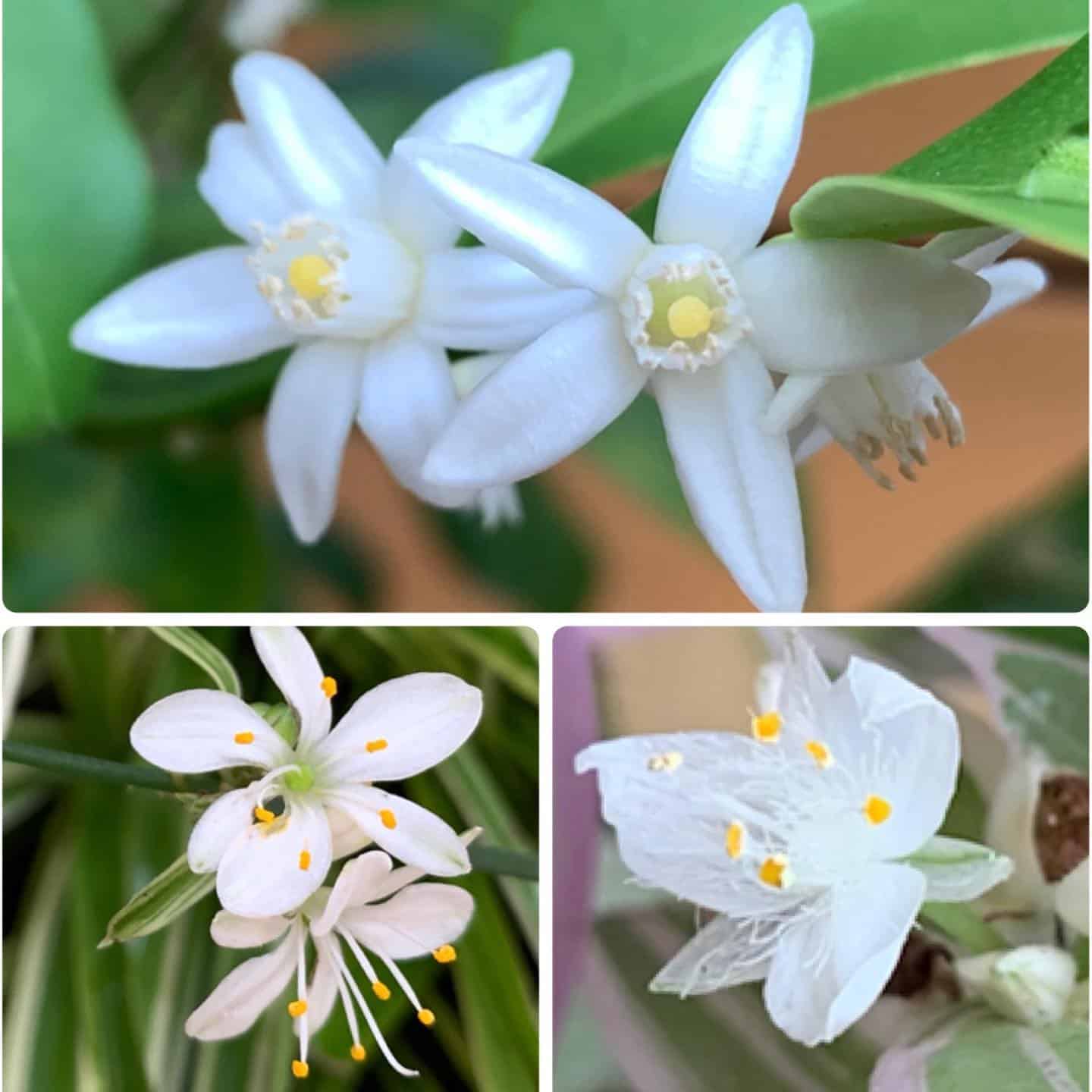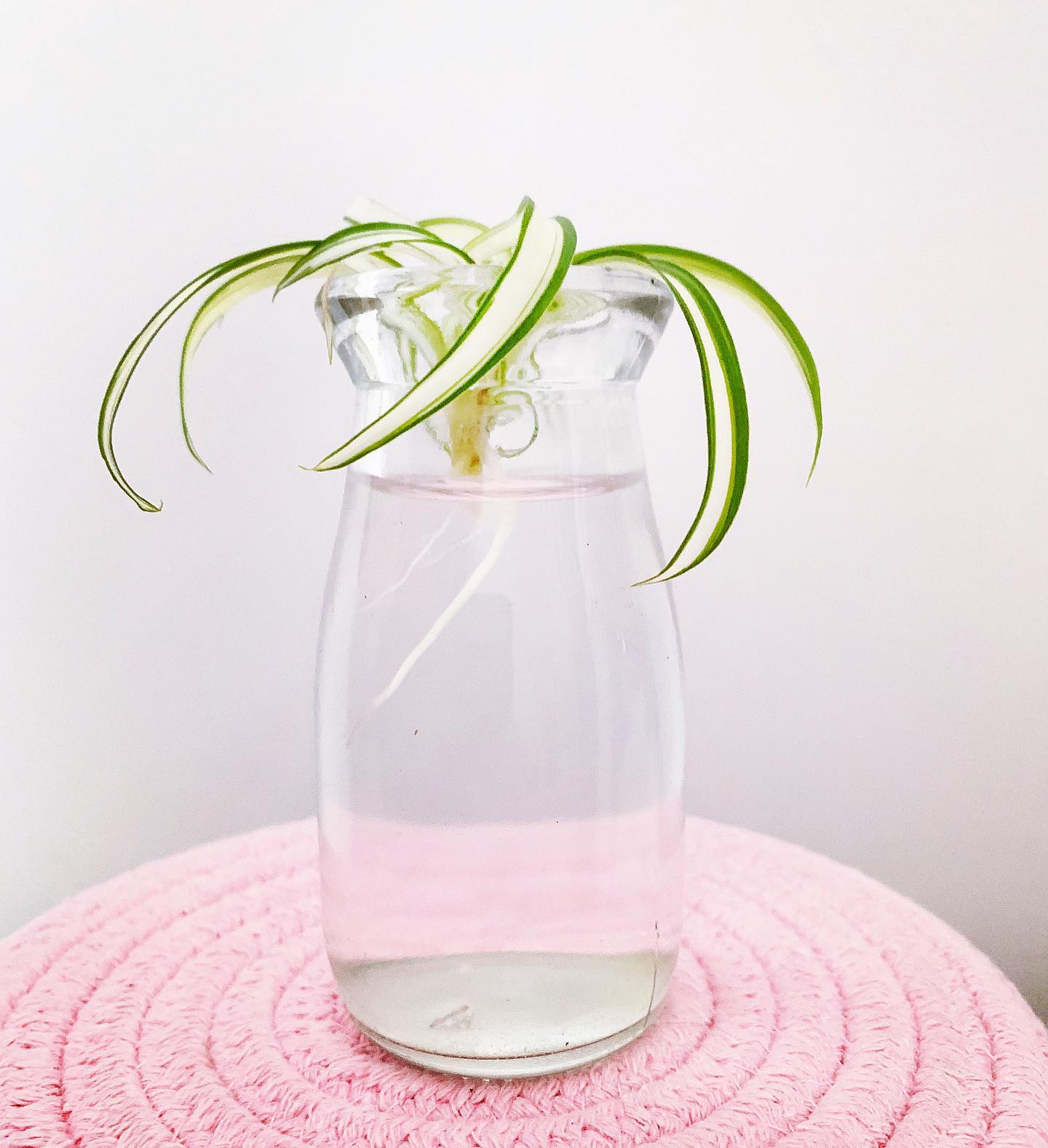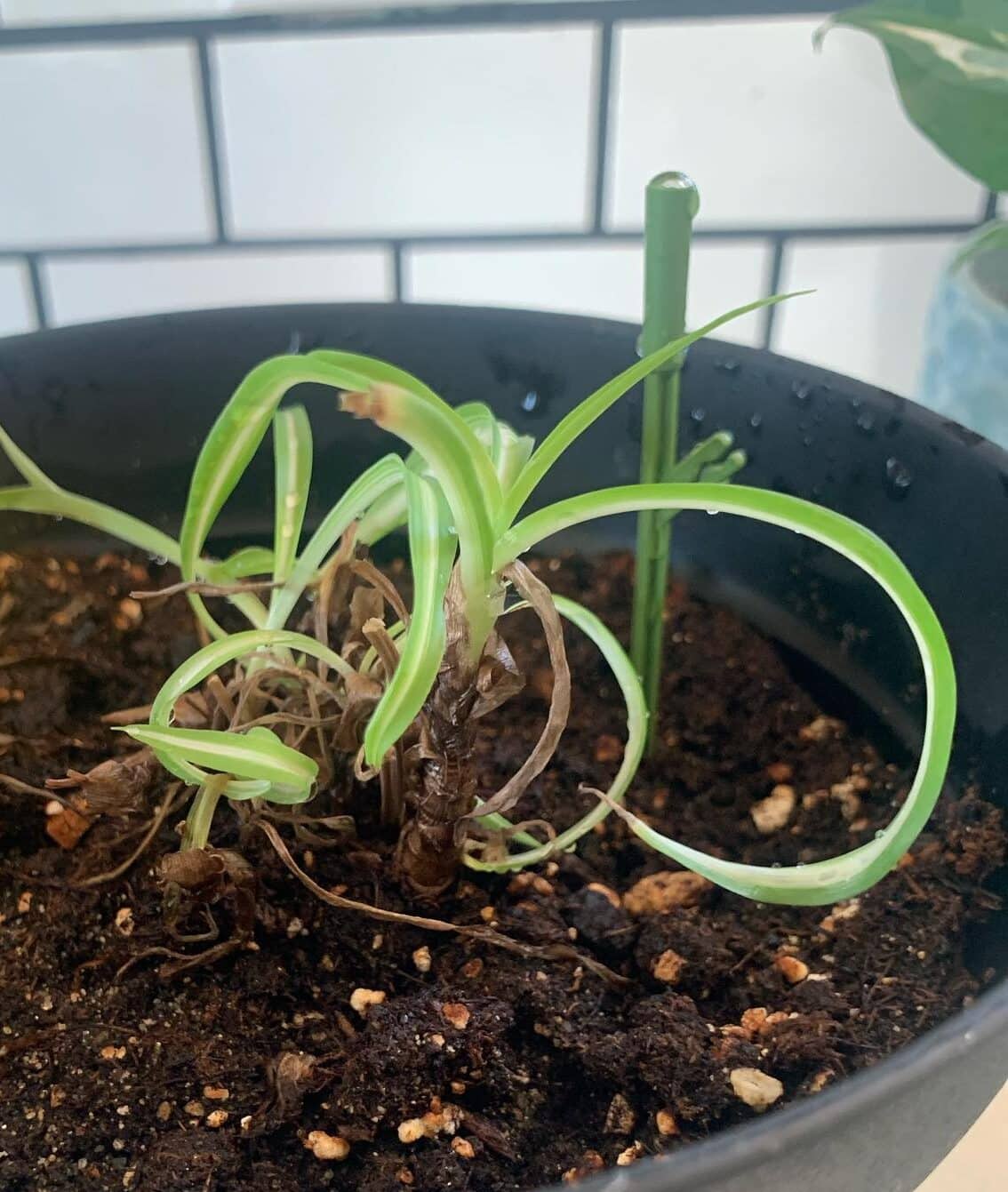The Curly Spider plant has naturally curly swirly glossy green leaves that do not signify improper care routines.
Immerse into the Curly Spider plant care to keep it healthy and thriving for longer.
Table of Contents Show
Curly Spider Plant Overview
The Curly Spider Plant (Chlorophytum comosum) is an exquisite Spider plant belonging to the Asparagaceae family.
It is more compact with curlier leaves than most other plain Spider plants.
| Indicator | Identity |
|---|---|
| Scientific Name | Chlorophytum comosum Bonnie |
| Common Names | Curly Spider Plant, Spider Ivy, Ribbon Plant |
| Origin | Southern Africa |
| Family | Asparagaceae |
| Plant Type | Compact variety with curly, swirly leaves |
| Growth Zone | USDA Zone 9-11 |
| Growth Size | 60 cm to 75 cm tall |
| Foliage Type | Traditional green with white stripe variegation |
| Blooms | Small, fragrant, star-shaped white flowers (if planted outdoor) |
| Toxicity | Non-toxic |
Curly Spider Plant: Best Care Hack
Ironically, if you perform more effort into Curly Leaf Spider plants, they may result in straighter leaves and not as expected curly.
Thus, you must be aware of the ideal care needs of the Curly Leaf Spider plant.

1. Sunlight & Temperature
Curly Spider plant proliferates in a warm room (60°F to 80°F) with access to bright indirect sunlight.
Under low light and cold temperatures (<45°F), they lose their stripes with stunted growth. So, entertain them outdoors if you live in USDA 9-11.
Contrarily, direct sun can cause overheating and cause brown patches on the crispy dry yellow leaves.
Therefore, strategically place them away from drafty windows, aim for heat blankets and pads, or rely on the incandescent lamp.
2. Water & Humidity
Curly Spider plant is sturdy regarding water needs but prefers moderately high 40-70% humidity.
Although underwatering issues are rare, weeks of no watering or misting can cause yellowing leaves with crispy tips.
Similarly, soggy soil and excess humidity cause root rot, mold formation and increased pest & fungal issues.
Thus, opt for bottom watering and throw some pebbles on top to keep your Curly Spider hydrated.
Moreover, you can aim to water them only after the top inches of soil turn dry or use a moisture meter.
3. Soil & Fertilizer
Curly Spider plants proliferate flawlessly in light, loamy, well-draining, acidic (6.0-6.5 pH) soil rich in organic matter.
Thus, combine succulent soil mix, coco coir, and peat moss and top it off with compost for an ideal soil mix.
On the other hand, feed them diluted balanced liquid fertilizer every two weeks. Or give them slow-release ones every three months.
But avoid fertilizing them in the dormant winter season to prevent overfertilization.
Excess fertilizer can cause salt build-ups, chemical burns and brown leaf tips. Meanwhile, low or no nutrition in soil results in stunted growth.
4. Potting & Repotting
Curly Spider plants prefer to stay crowded. So aim for 4 to 6 inches wide plastic or wooden pots with multiple drain holes.

For less repotting stress, aim to repot Bonnie in early spring. You can also help them by soaking them a night before repot.
While at it, you can trim off the dead, damaged roots and place them in a pot filled with fresh soil mix.
After repotting, use a pot about one or two sizes larger than the plant’s root ball.
5. Occasional Pruning
The Curly Spider plant care routine does not necessarily require pruning. But occasional pruning of damaged or dead foliage is preferred.
Moreover, you mustn’t hold back and prune the infected parts immediately if they are troubled by pests or fungal issues.
Generally, pests like mealybugs, spider mites, aphids and scales attack the Curly Spider plant.
Meanwhile, fungal leaf rot and root rot are common fungal problems in the Spider plant.
To control such infestation, prune off the parts, apply fungicides, and wash away residual pests using a soapy water solution.
As a preventive measure, apply neem oil on the plant aided with ideal watering and humidity.
Curly Spider Plant: All About Growth Rate
The Curly Spider plant ‘bonnie’ has a faster growth rate and grows up to 8 inches quickly.
Spring and summer are the most active growing season, while they stay dormant in winter.
Unlike other Spider plant varieties, Bonnie is relatively compact and much small.
They have curly green leaves with creamy whitish or yellowish stripes that extend over 18 inches long.
Although it is rare for Bonnie to bloom indoors, they produce fragrant star-shaped yellowish-white blooms in excellent care.
The bloom stems can get up to 40 cm long outdoors, ensuring no prolonged direct sun exposure.

Furthermore, they bloom throughout the spring and summer; thus, if you want to extend their flowering period, timely deadhead and prune them.
Toxicity of Curly Spider Plant
According to the ASPCA, the Curly Spider plant, aka Bonnie, is not toxic to cats and dogs.
That said, minor stomach upset followed by vomiting may incur upon accidental consumption.
You can prevent them from eating by utilizing hanging baskets, growing cat grass, and applying cat deterrents.
But if you suspect your pets took a nibble out of the Bonnie plant, seek professional help.
Here are a few helplines to rely on.
- ASPCA, Animal Poison Control Center: 888-426-4435
- Pet Poison Helpline: 855-764-7661
Propagation Methods for Curly Spider Plant
You can propagate Curly Spider plants via spiderettes, division and seeds via water and soil rooting medium.
But propagation via spiderettes is much preferred over other methods due to their easy steps.
Meanwhile, Bonnie propagation via seeds is not favored due to their meticulous care and breath-taking long process.
Before hopping on the propagation train, gather stuff like a rooting hormone, fresh potting mix and pots.
1. Propagation Via Spiderettes
To start with spiderettes, cut them using a sterilized pruner or simply pinch them off the stem.
After that, you can proceed to the root step, where you can choose water or soil as the rooting medium.
Water Medium
- Carefully cut off the spiderettes from the plant.
- Fill the clean jar with water and rooting hormone.
- Place the spiderettes on top of the jar, ensuring the leaves aren’t immersed in water.

- Replace the water now and then to avoid them getting stagnant.
- Place the jar in a bright place at a warm temperature and moderate humidity.
- Once offsets have roots sprout over an inch or two, transplant them in a small container with well-draining soil.
Soil Medium
- Fill the planter with potting mix, leaving half an inch of space between the soil’s surface.

- Poke an adjustable hole in the middle of the pot with a chopstick.
- Place the spiderette’s roots into the hole.
- Thoroughly water the freshly planted offset using a spray bottle.
- Place the offset in a location with medium or indirect bright light.
- Proceed with regular Curly Leaf Spider plant care.
2. Propagation Via Layering
In layering, you must wait till offset grows roots instead of cutting them and planting.
- Find a pot of 4 inches in size and fill it with potting mix.
- Place the pot near the mother plant and drape the spiderettes stem on the new pot using a floral pin.
- Ensure the offset is placed properly in a new pot.
- Poke a hole in the pot if the offset already has well-developed roots.
- Moisten the soil with a mini spray bottle but do not make it soggy.
- Once you notice newly established roots on offsets, you may cut it from its main stem.
3. Propagation Via Root Division
You can propagate your Bonnie plant via root division if they do not have any offshoots.
Moreover, potbound plants are much more suitable for root division while repotting.
- Take a healthy plant and divide them into two or three sections.
- You can pull the clumps using a sharp, sterilized knife if necessary.

- Plant those divided sections in clean glass water and wait for them to develop new roots.
- Once roots grow over an inch long, transplant them into an individual small pot.
- Regularly fetch them water to keep the soil moist but not soggy.
- Use organic matter to feed them for the first few months.
Curly Spider Plant for Sale
Amongst Spider plant varieties, Bonnie is the most sought-after for its natural curls.
Here are some online retailers where you can buy Curly Spider plant and enjoy its air-purifying benefits.
| Supplier | Delivery Time |
|---|---|
| Etsy | 3-7 business days |
| Ebay | 2-3 working days |
| Amazon | 2-7 business day |
| Walmart | 2-3 days |
| Bloom Box Club | 6-7 working days |
FAQs About Curly Spider Plant
Do Curly Spider plants stay curly?
Curly Spider plant will continue to unfurl natural curly leaves when provided with optimum care.
As it is easier to perform Curly Spider plant care, you may not have difficulty keeping it curly.
Why is my Spider plant so curly?
If they are not Bonnie’s variety of Spider plants but have curly leaves, they mean they are having underwatering issues.
How much light does a Curly Spider plant need?
Provide your Curly Leaf Spider plant with 6 to 8 hours of bright indirect sunlight. If possible, give them a few hours of morning sunshine.
Wrapping UP…
Place your Curly Spider plant together with Plumosa fern in hanging pots and enjoy combined natural air purification benefits,
Also, cut back on the care routine in winter and let them rest during their dormancy without any disturbance.
Happy Gardening!


